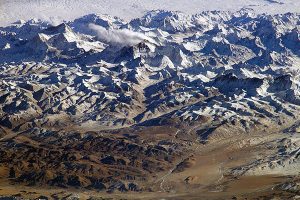Geological uplift creates mountain biodiversity hotspots

Mountains tend to have more species than valleys, and new research provides support for the theory that mountain formation itself might be responsible.
Yaowu Ying and Richard Ree from The Field Museum in Chicago compared regional rates of plant colonisation and speciation in the Qinghai-Tibetan plateau, a high-altitude biodiversity hotspot. Within the QTP, the Hengduan mountain region is the most biodiverse, harbouring an astonishing 12,000 species in just 500,000 km2. The authors used published datasets to compare the spread of over 4,500 plant species across Hengduan, the Central Asian Mountains and the Himalayas.
